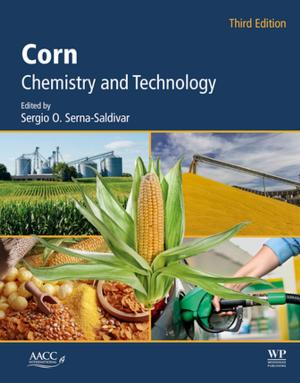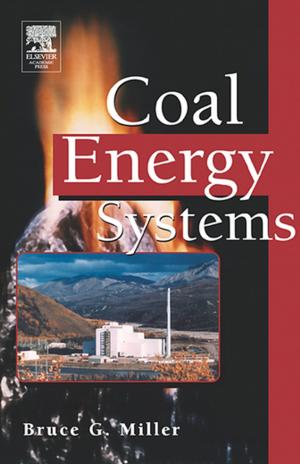| Author: | Walter Jennings, Eric Mittlefehldt, Phillip Stremple | ISBN: | 9780080527208 |
| Publisher: | Elsevier Science | Publication: | September 25, 1997 |
| Imprint: | Academic Press | Language: | English |
| Author: | Walter Jennings, Eric Mittlefehldt, Phillip Stremple |
| ISBN: | 9780080527208 |
| Publisher: | Elsevier Science |
| Publication: | September 25, 1997 |
| Imprint: | Academic Press |
| Language: | English |
Gas chromatography remains the world's most widely used analytical technique, yet the expertise of a large proportion of chromatographers lies in other fields. Many users have little real knowledge of the variablesin the chromatographic process, the interaction between those variables, how they are best controlled, how the quality of their analytical results could be improved, and how analysis times can be shortened to facilitate the generation of a greater numberof more reliable results on the same equipment. An analyst with a more comprehensive understanding of chromatographic principles and practice, however, can often improve the quality of the data generated, reduce the analytical time, and forestall the needto purchase an additional chromatograph or another mass spectrometer.The Second Edition of Analytical Gas Chromatography is extensively revised with selected areas expanded and many new explanations and figures. The section on sample injection has been updated to include newer concepts of split, splitless, hot and cold on-column, programmed temperature vaporization, and large volume injections. Coverage of stationary phases now includes discussion, applications, and rationale of the increased thermal and oxidative resistance of the newly designed silarylenepolysiloxane polymers. Conventional and"extended range"polyethylene glycol stationary phases are examined from the viewpoints of temperature range and retention index reliabilities, and the chapter on"Variables"has been completely rewritten. The ways in which carrier gas velocity influences chromatographic performance is considered in detail, and includes what may be the first rational explanation of the seemingly anomalous effects that temperature exercises on gas viscosity (and gas flow). The practical effects that these changes cause to the chromatography is examined in pressure-, flow-, and"EPC-"regulated systems."Column Selection, Installation, and Use"has been completely rewritten as well. The accuracy of theVan Deemter plots has been greatly enhanced; a new program corrects for the first time for the changes in gas density and diffusion that occur during the chromatographic process because of solute progression through the pressure drop of the column. A new section has also been added on meeting thespecial requirements of columns destined for mass spectral analysis. The chapter on"Special Applications"has been expanded to include considerations of"selectivity tuning,"of fast analysis, and the section of Applications has been thoroughly updated and expanded.
- Incorporates nearly 60% new material
- Covers the newest concepts and materials for sample injection and stationary phases
- Presents detailed consideration of the influence of carrier gas velocity on practical aspects of chromatographic performance
- Contains a chapter on "Special Analytical Techniques" which includes consideration of selectivity tuning and fast analysis
- Provides a new section addressing the special requirements of columns to be used in mass spectral analysis
- Includes an improved program that greatly enhances the accuracy of the Van Deemter plots by more accurately depicting localized chromatographic conditions at each point in the column
Gas chromatography remains the world's most widely used analytical technique, yet the expertise of a large proportion of chromatographers lies in other fields. Many users have little real knowledge of the variablesin the chromatographic process, the interaction between those variables, how they are best controlled, how the quality of their analytical results could be improved, and how analysis times can be shortened to facilitate the generation of a greater numberof more reliable results on the same equipment. An analyst with a more comprehensive understanding of chromatographic principles and practice, however, can often improve the quality of the data generated, reduce the analytical time, and forestall the needto purchase an additional chromatograph or another mass spectrometer.The Second Edition of Analytical Gas Chromatography is extensively revised with selected areas expanded and many new explanations and figures. The section on sample injection has been updated to include newer concepts of split, splitless, hot and cold on-column, programmed temperature vaporization, and large volume injections. Coverage of stationary phases now includes discussion, applications, and rationale of the increased thermal and oxidative resistance of the newly designed silarylenepolysiloxane polymers. Conventional and"extended range"polyethylene glycol stationary phases are examined from the viewpoints of temperature range and retention index reliabilities, and the chapter on"Variables"has been completely rewritten. The ways in which carrier gas velocity influences chromatographic performance is considered in detail, and includes what may be the first rational explanation of the seemingly anomalous effects that temperature exercises on gas viscosity (and gas flow). The practical effects that these changes cause to the chromatography is examined in pressure-, flow-, and"EPC-"regulated systems."Column Selection, Installation, and Use"has been completely rewritten as well. The accuracy of theVan Deemter plots has been greatly enhanced; a new program corrects for the first time for the changes in gas density and diffusion that occur during the chromatographic process because of solute progression through the pressure drop of the column. A new section has also been added on meeting thespecial requirements of columns destined for mass spectral analysis. The chapter on"Special Applications"has been expanded to include considerations of"selectivity tuning,"of fast analysis, and the section of Applications has been thoroughly updated and expanded.
- Incorporates nearly 60% new material
- Covers the newest concepts and materials for sample injection and stationary phases
- Presents detailed consideration of the influence of carrier gas velocity on practical aspects of chromatographic performance
- Contains a chapter on "Special Analytical Techniques" which includes consideration of selectivity tuning and fast analysis
- Provides a new section addressing the special requirements of columns to be used in mass spectral analysis
- Includes an improved program that greatly enhances the accuracy of the Van Deemter plots by more accurately depicting localized chromatographic conditions at each point in the column















